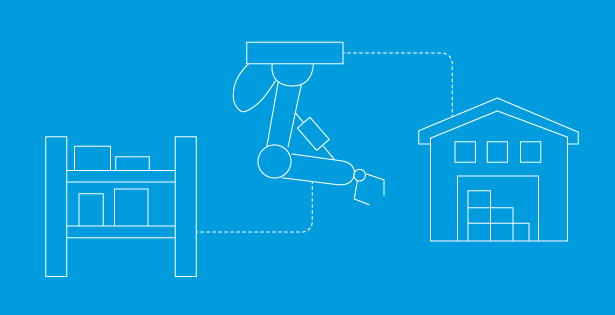Project Management & Accounting in Microsoft Dynamics 365 F&SC is a powerful tool that can be used to manage a business’s labor costs, material transactions, and expenses within pre-defined projects, as well as facilitate customer invoicing, revenue recognition, cost clearance, and even asset capitalization.
Project Groups
The core configuration for projects lives within project groups. Projects can be set up as fixed price, time & material, investment (capital), and internal. These project groups also determine if costs will be recorded directly to the P&L, or to WIP to later be realized upon project completion. Fixed price projects can also be configured for revenue recognition using the completed cost methodology, or percentage of completion.
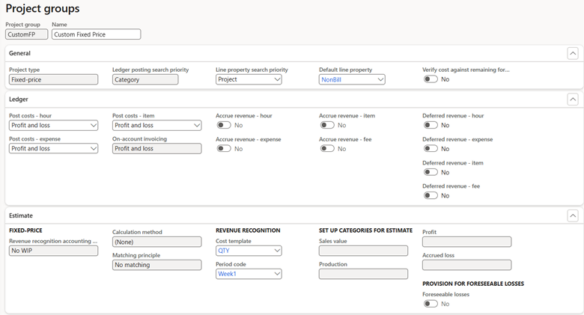
Costs
Costs recorded to projects can be simply classified as hour, item, and expense. Each one of these has a journal type to directly post the transaction to one or more projects, with item journal consuming inventory. Additionally, there are other methods to get these costs onto a project. Hours can be recorded via project timesheets, Item transactions can be created via project purchase orders, and expenses can translate directly from D365’s Expense Management module.
Invoicing
Invoices can be generated from projects using a variety of methods. Costs recorded against a time and material project can be set up as billable, with flexible sales prices, to invoice the customer assigned to the project. Milestone billing can also be accomplished on fixed price projects by creating on-account lines, which represent the milestones, and generating project invoice proposals. Project sales order lines can also be invoiced via project invoice proposals. Standalone invoicing is also available for fees by creating and invoicing fee journals.
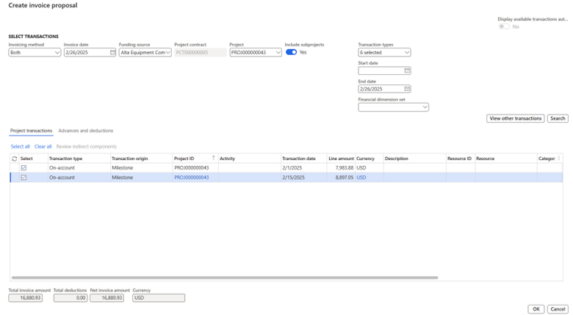
Revenue Recognition
The revenue recognition process is utilized on fixed price and time & material projects, and the process can differ based on if the project is set up with the completed contract methodology or the percentage of completion methodology. If it is completed contract, revenue recognition will only be run at the end of the project to recognize 100% of the revenue. Percentage of completion projects have a more involved revenue recognition process. Costs, which are accumulated in the cost categories of hour, item, or expense, are divided against the project forecast amounts for those buckets to determine the percentage of completion. This percentage is then applied against the sum of the on-account lines used in invoicing to determine the accumulated revenue, which is then recognized upon posting. One important note is that a project can never recognize more than 100% of revenue, and how D365 enforces that is important to consider. Once a cost category accumulates more cost than that category’s forecast amount, the calculation for percentage of completion is no longer the standard Actuals / Forecasted. Instead, the forecast amount is adjusted to match the actual cost amount. In the screenshot below, the forecast amount for item transactions is equal to $10,000 but the actuals is $12,360. The calculation for the item category is 12,360/12,360. This will provide a more conservative methodology of revenue recognition.

When running the revenue recognition process, users can always select a different cost to complete method. This comes in handy when running revenue recognition for a percentage of completion project that has costs below forecasted amounts but is ready to finalize and revenue can be recognized at 100%. By changing the cost to complete method to “Set cost to complete to 0”, the POC calculation will be disregarded, and revenue will be 100% recognized for the project.
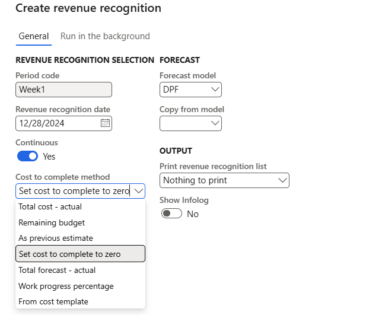
Lastly, revenue recognition for a project group can be configured via the cost template. This can be utilized to mark transactions to be included or excluded in the calculations for percentage of completion, such as sales commissions.
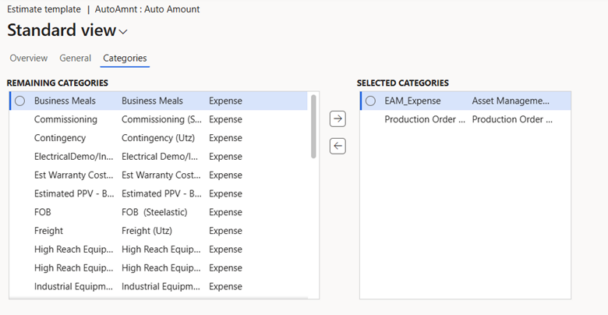
Elimination
Elimination is used cost clearance on fixed price projects. All accumulated costs on a project will transfer from the WIP accounts to the configured P&L accounts. On investment projects, users can select either a ledger account or a fixed asset to eliminate to. This will transfer the costs from CIP to the asset accounts, as well as updating the status on the fixed asset from “not yet acquired” to “open” to begin depreciation. This process is generally performed at the end of a project, and the prompt to execute the elimination gives the user the option to set the project status to “Finished.”


 RSMUS.com
RSMUS.com

